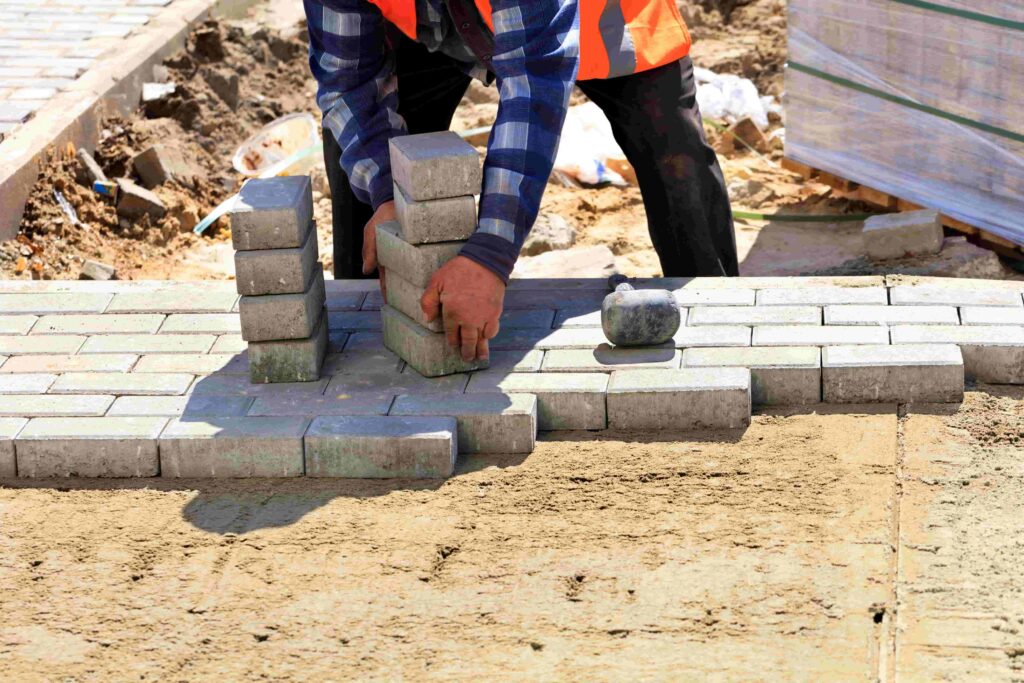
A well-executed masonry takeoff is essential for generating accurate cost estimates, controlling procurement, and scheduling labor effectively on any project that involves brick, block, stone, or veneer finishes. Since masonry is one of the most labor-intensive and material-heavy scopes of work, takeoff precision directly affects the competitiveness and success of a bid.
At TrueBidData.com, masonry takeoffs are more than just quantity counts—they’re structured data outputs that connect with cost forecasting, production rates, and vendor planning. This approach improves consistency, reduces overages, and aligns material needs with construction timelines.
Scope of a Masonry Takeoff
Masonry work spans a variety of construction elements, and an accurate takeoff should include:
- CMU (concrete masonry units)
- Brickwork (modular, utility, Norman, etc.)
- Cast stone and natural stone
- Mortar, grout, ties, and flashing
- Lintels and reinforcing
- Control and expansion joints
- Wall insulation and vapor barriers (if embedded)
Each of these components requires detailed dimensioning and quantity breakdowns to ensure every material cost is accounted for and every labor task is properly scheduled.
Data-Driven Quantity Extraction
At the core of a masonry takeoff is the conversion of project drawings into usable quantity data. Digital workflows enable estimators to:
- Extract square footage of vertical masonry walls
- Convert wall area into block or brick counts based on modular sizes
- Include allowances for waste and breakage
- Account for openings, control joints, and reinforcement zones
- Separate structural vs. veneer masonry
This level of detail ensures the quantities you generate are buildable and translatable to the field—reducing the risk of costly surprises mid-project.
How Masonry Takeoffs Impact Cost Accuracy
For labor-heavy trades like masonry, unit pricing often fluctuates based on complexity, height, wall thickness, and even weather conditions. When a takeoff accurately segments the work by type and difficulty, estimators can apply labor productivity rates that match real-world performance.
For example:
- 8” CMU at ground level may have a different output rate than veneer brick on a scaffolded third floor.
- Structural masonry with rebar and grout cells is priced differently than non-loadbearing partition walls.
- Interior vs. exterior wall insulation needs may require separate calculations.
With data structured at this level, contractors can benchmark against historical productivity and apply local wage rates to forecast crew requirements with confidence.
Masonry Materials and Waste Factors
Estimating the true cost of masonry materials involves more than unit counts. You must apply realistic waste factors for:
- Cut bricks around openings or corners
- Breakage during transportation and handling
- Over ordering for stocking remote areas of the site
At True Bid Data, we provide smart formulas for waste allowances based on wall complexity and material type. Our database also includes material cost ranges from local suppliers, helping estimators compare pricing per block, brick, or pallet.
Reinforcing, Accessories, and Ancillary Items
A complete masonry takeoff includes more than just the primary materials. It also captures:
- Vertical and horizontal rebar (where required)
- Grout fill volumes for reinforced masonry
- Lintels over openings
- Wall ties and anchorages
- Flashing, weep holes, and drip edges
Missing these items can make a bid appear cheaper upfront but can erode profit margins once construction begins. A detailed, data-backed takeoff ensures none of these critical components are overlooked.
Linking Takeoff to CSI Division 04 (Masonry)
Organizing masonry quantities by CSI Division 04 allows for cleaner estimate formatting and easier subcontractor bid review. Subcategories include:
- 04 05 00 – Common Work Results for Masonry
- 04 20 00 – Unit Masonry
- 04 40 00 – Stone Assemblies
- 04 60 00 – Corrosion-Resistant Masonry
By aligning your takeoff outputs with CSI structure, you enable smoother integration into bid forms, project specs, and progress billing systems.
Leveraging Takeoff Data for Procurement
Once masonry quantities are verified, the takeoff becomes the foundation for purchasing. It informs:
- Pallet counts for bricks/blocks
- Timing and sequencing of deliveries
- Staging zones on-site based on wall location
- Mortar mix types and quantities
- Coordination with reinforcing and grout suppliers
Using True Bid Data workflows, these procurement requirements can be generated automatically from the takeoff, reducing back-and-forth and streamlining vendor communication.
Avoiding Common Pitfalls in Masonry Takeoff
Even experienced estimators can run into challenges like:
- Failing to account for backup walls behind veneers
- Overlooking the impact of coursing patterns on quantity
- Misjudging wall area due to missing scale adjustments
- Underestimating corner and return complexities
- Ignoring expansion joint layout requirements
True Bid Data supports quality control in masonry takeoffs by offering checklists, QA templates, and drawing annotation tools that reduce the chance of errors.
Optimizing Estimating Workflow with True Bid Data
The value of a masonry takeoff multiplies when it’s integrated into a digital estimating workflow. At True Bid Data, we help estimators:
- Use cloud-based takeoff tools to mark drawings
- Auto-calculate masonry quantities from dimensioned plans
- Apply local labor and material costs
- Generate CSI-coded breakdowns for client proposals
- Review takeoff data against similar past projects for benchmarking
This transforms the takeoff from a static measurement task into a strategic asset for pricing, scheduling, and procurement.
Streamline Your Masonry Takeoffs with True Bid Data
Whether you’re bidding masonry on a small residential job or a multi-story commercial project, precise takeoff data is critical for competitive and profitable estimating.
At True Bid Data, we combine automation, insight, and standardization to give you accurate masonry takeoffs aligned with cost codes, labor data, and vendor pricing. Eliminate manual guesswork and produce estimates backed by real numbers and real experience.
Visit True Bid Data today to simplify your masonry estimating workflow and win more profitable projects.




